

Space Tourism: How Much Does it Cost & Who's Offering It?
Last Updated: December 17, 2022
Many of us dream of going to space and over 600 people have traveled to space as astronauts in government-funded agencies such as NASA, the European Space Agency, and Roscosmos. But how much does spaceflight cost in today and how is that expected to change in the coming years?
With new advancements in spaceflight technology, the costs of space travel are decreasing, making the dream of spaceflight a little closer for us all.
Evolution of Spaceflight Costs and Technologies
During the space race, the cost of sending something into space averaged between $6,000 to over $25,000 per kg of weight not adjusted for inflation and NASA spent $28 billion to land astronauts on the moon, about $288 billion in today’s dollars.
In recent decades, it has averaged around $10,000 per kg though certain missions have been higher due to other factors including the destination, the size of the rocket, the amount of fuel needed, and the cost of fuel.
After the retirement of the space shuttle program, NASA paid Russia to transport astronauts to the ISS at about $80 million per seat on the Soyuz rocket. NASA’s biggest and newest rocket, the SLS (Space Launch System) which is currently being utilized for the new moon missions including Artemis and Orion, currently costs about $2-4 billion per launch.
But recent years and the addition of private space companies have drastically changed the game. NASA allowed private space companies to develop equipment for missions, including a 2006 partnership with SpaceX under the Commercial Orbital Transportation Services (COTS) program to provide resupply for crew and cargo demonstration contracts to the International Space Station (ISS).
This partnership has continued to flourish over the years with SpaceX successfully launching two NASA astronauts in May 2020 on a Crew Dragon Spacecraft, making SpaceX the first private company to send astronauts to the ISS and the first crewed orbital launch from American soil in 9 years.
With the revolutionary technology of reusable boosters from SpaceX, the cost has plummeted, achieving less than $1,600 per kg with the Falcon Heavy (still totaling more than $100 million per launch) and even a projected cost of under a thousand for their next generation model Star Ship.
These recent innovations are even making SLS the more expensive, less efficient option if SpaceX’s projections continue to progress as expected within margins of error. We shall see how NASA plans to adapt goals in light of this.
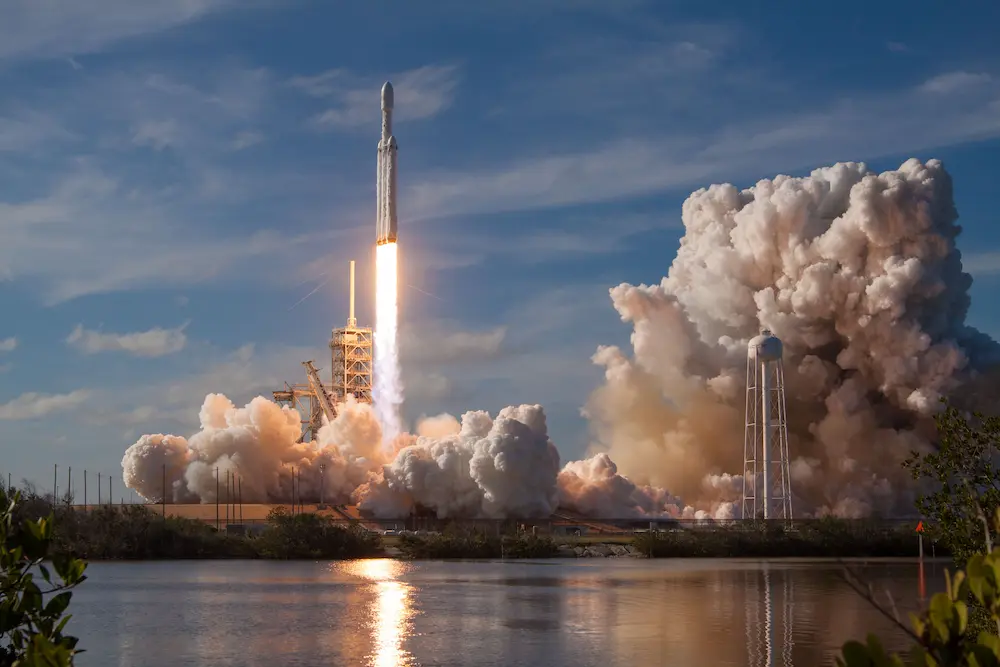
The Falcon Heavy is a cost-effective option for launching payloads into space.
The rise of private space companies
With private space companies, the opportunity for civilians to book a trip to space similar to booking a flight came closer to reality. Dennis Tito was the first private citizen to pay for a trip to space with a trip to the ISS from April 28th to May 6th, 2001 for $20 million dollars. Tito purchased his experience through Space Adventures Inc. which was founded in 1998 and offers a variety of different space experiences. They even acquired Zero Gravity Corporation, NASA’s provider of Reduced Gravity Training (not in space) for its astronauts, in 2008. They offer similar experiences for private individuals starting at about $8,200 as of this publishing (December 2022).
Space Adventures sent seven other space tourists to the ISS through 2009, but due to a number of factors, Space Adventures had to put their ISS offerings on hold until 2021 when they were able to purchase two Soyuz seats due to NASA moving their contract to SpaceX. Space Adventures sent two people to the ISS via the Roscosmos Soyuz rocket in December 2021 and is working on expanding its offerings.
In addition to Elon Musk’s SpaceX, there are a number of other private space companies getting into the commercial spaceflight/ space tourism market, most notably Richard Branson’s Virgin Galactic and Jeff Bezos’s Blue Origins.
Flight Providers & Rates
What are the current rates for commercial spaceflight tickets? What commercial spaceflight trips have already happened? All prices are per person/ per seat.
SpaceX has had the most experience in sending humans to space thanks to its partnership with NASA and Musk has made it clear that he wants to make space travel an option for the public. To date, SpaceX has offered two commercial spaceflight options and has one big one planned for the future:
- SpaceX completed a Multi-Day Orbital Voyage, the first of their new plan to offer private astronaut experiences through their NASA partnership.
- Estimated $55 million for a 3-day stay inside a modified SpaceX Dragon capsule orbiting the Earth at 357 miles (574 km) with three crewmates, sponsored by billionaire Jared Isaacman to raise money for St Jude’s Children’s Hospital
- Partnership between SpaceX and Houston-based Axiom Space Inc.
- $55 million for a 10-day trip to ISS at 408 km with a weeklong (8-day) stay in the orbital lab.
- Expected to continue in 2023
- Axiom plans to build a stand-alone space station to replace the ISS with the first module expected to launch in 2024.
- Steve Aoki: American DJ and record producer
- Everyday Astronaut Tim Dodd: American science communicator, content creator, photographer, and musician
- Yemi A.D.: Czech choreographer, art director and performer
- Rhiannon Adam: Irish photographer
- Karim Iliya: British photographer and filmmaker
- Brendan Hall: American filmmaker and photographer
- Dev Joshi: Indian television actor
- Choi Seung-hyun (stage name: T.O.P.): South Korean rapper, singer, songwriter, record producer, and actor
- Cost is unknown, likely a minimum of $500 million
2. Blue Origin
Blue Origin: currently offers a 100km 12-minute ride to the Karman Line, the recognized boundary between Earth’s atmosphere and outer space; pricing is still unclear and dependent on a variety of factors
- On July 2021, Jeff and Mark Bezos went into space on the New Shepard rocket with Oliver Daemen (who won the trip through an auction bid of around 28 million) and honored guest Wally Funk (a member of Mercury 13, the private program in which women trained to be astronauts but ultimately never went to space)
- Blue Origin has completed 6 commercial space flights as of this publishing. Some “honorable guests” have been invited free of charge, such as Funk and actor William Shatner (Captain Kirk from the original Star Trek). Some have been sponsored or have received special deals due to their nonprofit status.
- $28 million winning auction bid for the first flight ( $19 million was donated)
- $1 million for a board member of a nonprofit
- About $1.25 for a Dude Perfect comedy group crew member, hosted by MoonDAO in August 2022
3. Virgin Galactic Subortbital Joy Ride
Virgin Galactic Subortbital Joy Ride: $450,000 for a 90-minute ride to suborbital space 50km above sea level
- In July 2021, founder Richard Branson flew to the edge of Earth’s atmosphere with two pilots and three other Virgin Galactic employees as the first test of commercial spaceflight for the company
- Each VSS Unity SpaceShipTwo carries up to four passengers
- Expected flights are currently anticipated to begin in 2023
- Includes training accommodations and amenities; launches from New Mexico
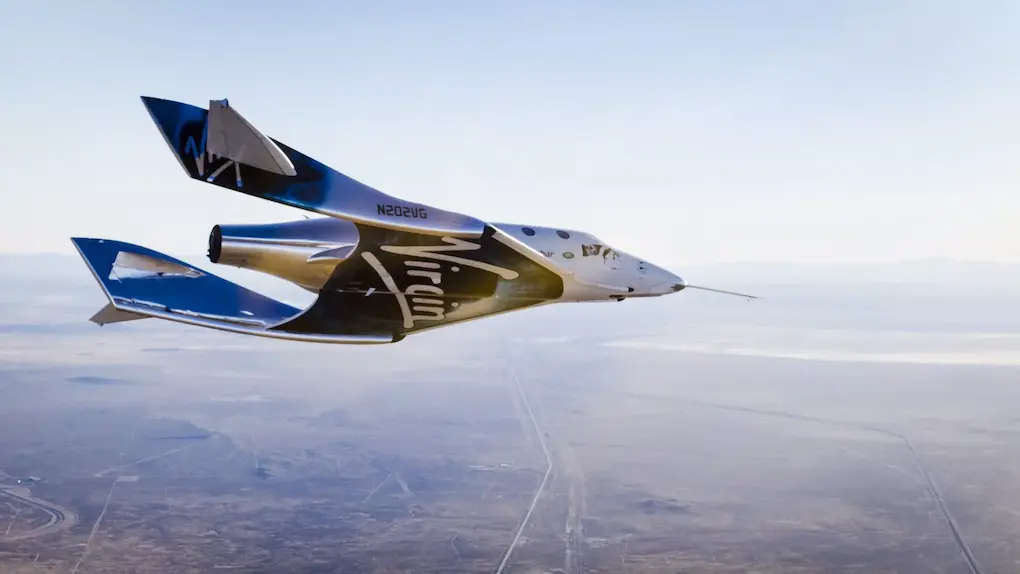
4. Roscosmos/ Space Adventures Customized ISS Trip
Roscosmos/ Space Adventures Customized ISS Trip: $50-60million for a 12-day trip to the ISS at 408 km
- In October 2021 an actress and director shot scenes for the first movie filmed in space
- December 2021 Japanese billionaire Yusaku Maezawa and Yozo Hirano for two days (same billionaire planning to go to the moon with SpaceX)
- With the current situation between Russia and Ukraine, this option is effectively nonexistent currently
5. Space Perspective
Space Perspective: a six-hour balloon ride to space/ the stratosphere on their “Spaceship Neptune” at $125,000
- Rides are currently scheduled to begin by the end of 2024.
- A pressurized capsule will be slowly lifted by a football-field-sized hydrogen-filled balloon 19 miles (30 km) into the stratosphere, about 3 times the altitude of commercial planes.
- The passenger cabin features a bar, bathroom, and windows for sightseeing and is expected to carry 8 passengers and 1 pilot per trip.
6. Aurora Space Station (no longer in development)
Aurora Space Station was supposed to be the world’s first luxury space hotel, offering a 12-day stay for $9.5 million allowing them to free float, observe space and earth, practice hydroponics and play in a hologram deck, but they shut down operations and refunded all deposits in March 2021. They received a lot of media attention and therefore are noted here due to that notoriety.
Conclusion: the current cost of flying to space
Currently, it is only available to those who can spend an average of $250,000 to $500,000 for suborbital trips (about a fifteen-minute ride to the edge of space and back) or flights to actual orbit at more than $50 million per seat (though typically a longer trip than 15 minutes).
It could be free/ discounted if you can find a sponsor, often for nonprofit/ charity purposes, or if you are someone of notoriety that can help spread the company’s mission.
Waitlists are available for most offerings, with a deposit, with many stretching years into the future, which might end up helping you have a spot at a more reasonable price in the future if you can save up.
Many companies are looking to provide extended stay options on private space stations in the future, similar to how you might book a flight somewhere and stay in a hotel for a few days. Again, for the immediate future, this is estimated to cost tens of millions of dollars. The biggest portion of the cost would be launching them, though it is still estimated that a couple million dollars will be needed to cover the expenses of your stay while you are on the space station, whether that is included in the ticket price or added on top of that.
Many companies are hopeful they can eventually price a trip to space down to $100,000 but that will likely take some time, even with the cost-saving measures of reusable boosters. Many forms of recent technology have evolved exponentially in recent years and with dropping price rates as well. Just as plane travel was originally prohibitively expensive, but has now become fairly reasonable for the average consumer, the hope is that the same will eventually happen with space tourism, but we will have to see how long that takes.
While the possibility of going to space is still out of reach for many of us, hopefully, the advancements in recent years and those yet to come will help to continually lower the costs of going to space, just as has occurred in many other fields. This author, for one, truly hopes that the interest of the elite who are currently able to participate in these offerings will spur research and development, not just of space tourism but space exploration in general, to help fuel a quicker journey to space access for all

Written by Sarah Hoffschwelle
Sarah Hoffschwelle is a freelance writer who covers a combination of topics including astronomy, general science and STEM, self-development, art, and societal commentary. In the past, Sarah worked in educational nonprofits providing free-choice learning experiences for audiences ages 2-99. As a lifelong space nerd, she loves sharing the universe with others through her words. She currently writes on Medium at https://medium.com/@sarah-marie and authors self-help and children’s books.
Wow! There's more to read 🚀
This page is part of our collection of articles about astronauts . If you enjoyed the read, then you’ll love the following articles.

How much do astronauts get paid?
The requirements to become an astronaut are extremely rigorous. Does their salary match the difficulty of their profession?
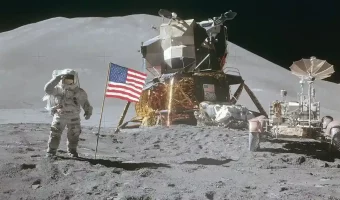
How many flags are on the Moon? The up-to-date list
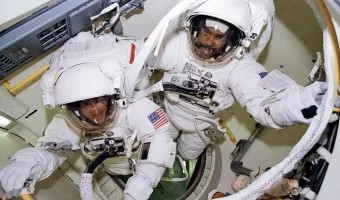
What are the different types of astronauts suit?

How do astronauts train for zero-gravity environments?
How much are SpaceX tourists actually paying to fly around the Moon?
The short answer: a lot.
By Rachel Becker
Share this story
:format(webp)/cdn0.vox-cdn.com/uploads/chorus_asset/file/8061245/dragon_v2_in_orbit.jpg)
Two mystery space tourists put down a “ significant deposit ” with SpaceX to take a round-trip around the Moon, CEO Elon Musk announced yesterday . Musk didn’t say much about the two unidentified passengers, let alone how much money they’re shelling out for their Moon voyage. Turns out, it’s remarkably difficult to guess the costs of human spaceflight.
“There’s not just a line item that says, ‘Send this person to space.’”
That’s because, unsurprisingly, there’s a lot that goes into launching someone into space. There are the obvious costs: the spacecraft, the rocket, and the fuel. But then there are the less obvious, just as key, costs: the years and equipment needed to train the astronauts, building and maintaining the launchpad, paying the people on the ground in mission control, having rescue plans and personnel ready to get the astronauts or space tourists to safety if there’s an emergency. And that’s just the short list.
“It’s always a more complex answer,” Daniel Huot, a spokesperson for NASA, tells The Verge . “There’s not just a line item that says, ‘Send this person to space.’”
Here’s what we do know: while Musk wouldn’t specify an exact price, he did say that the around-the-Moon mission could cost roughly the same or a bit more than a crewed trip to the International Space Station. SpaceX declined an emailed request for clarification.
So what does that mean? Right now NASA pays the Russian space agency Roscosmos about $81 million and change for a round-trip ticket in a Soyuz capsule . The latest five seats NASA bought in bulk were a little cheaper, about $74.7 million per seat . Another spokesperson for NASA, Kathryn Hambleton, told The Verge in an email that the ticket price includes:
- Training to operate the spacecraft
- Use of the launchpad and launch support services
- Flight control, docking, and undocking services
- Air, consumables, and life support en route
- Standby emergency services for a rescue in orbit, or during landing
- Medical services after landing
- The variable weight of the crew and their cargo to and from the station
The reason why NASA relies on Roscosmos is that the US space agency hasn’t had a vehicle of its own to ferry astronauts to and from the ISS since 2011, when the Space Shuttle program was shuttered. NASA is hoping the $81 million price tag will drop in the future by partnering with private companies like SpaceX and Boeing through the Commercial Crew Program .
NASA estimates that a round-trip ticket to the ISS on the SpaceX Crew Dragon or the Boeing CST-100 Starliner would cost about $58 million . A spokesperson for Boeing could not confirm the ticket price, and SpaceX declined to comment.
How much would this longer trip cost?
A one-way trip to the ISS, however, covers a distance of roughly 220 miles . Musk said yesterday that the SpaceX lunar trip would brush past the surface of the Moon and venture deeper into space, before looping back to Earth — a distance of approximately 300,000 to 400,000 miles . (It’s not clear how they arrived at those numbers, considering that a one-way trip to the Moon when it’s closest to Earth is about 225,623 miles, according to NASA .)
How much would this much longer trip cost? Space Adventures , a travel agency that arranges space journeys with Roscosmos for private citizens, tells The Verge the price tag is more than double the cost of a trip to the ISS: about $175 million dollars per seat. The company, which has already sent seven individuals to the space station, plans to send tourists around the Moon by 2020 — and that’s how much they’re going to charge.
“We cannot be more specific as there are many variables, including destination, vehicle, duration and other options,” Stacey Tearne, a spokesperson for Space Adventures, wrote in an email to The Verge .
One of the variables, which could shoot up the price of any space mission , is of course, delays. And as we know, Musk has a bit of a problem with deadlines .
Update 1:10PM EST, 2/28: Updated to reflect the fact that a SpaceX spokesperson replied to emailed inquiries after the story was published, but declined to comment.
What happens after your country runs on 99 percent renewable electricity?
This self-transforming megatron is as badass as it is expensive, microsoft needs to win back trust, a morning with the rabbit r1: a fun, funky, unfinished ai gadget, the fossil-size hole in wear os.
More from this stream SpaceX Moon mission: the latest news about Elon Musk's plans for a trip around the Moon
With its moon announcement, did spacex kick off the first public-private space race, spacex’s moon flight will be the first truly private ticket to space, what we can learn about spacex’s trip to the moon from the apollo 8 mission, the millionaire tourists on spacex's moon trip better document the whole thing.
- Today's news
- Reviews and deals
- Climate change
- 2024 election
- Fall allergies
- Health news
- Mental health
- Sexual health
- Family health
- So mini ways
- Unapologetically
- Buying guides
Entertainment
- How to Watch
- My Portfolio
- Stock Market
- Biden Economy
- EV Deep Dive
- Stocks: Most Actives
- Stocks: Gainers
- Stocks: Losers
- Trending Tickers
- World Indices
- US Treasury Bonds
- Top Mutual Funds
- Highest Open Interest
- Highest Implied Volatility
- Stock Comparison
- Advanced Charts
- Currency Converter
- Investment Ideas
- Research Reports
- Basic Materials
- Communication Services
- Consumer Cyclical
- Consumer Defensive
- Financial Services
- Industrials
- Real Estate
- Mutual Funds
- Credit Cards
- Balance transfer cards
- Cash-back cards
- Rewards cards
- Travel cards
- Personal Loans
- Student Loans
- Car Insurance
- Morning Brief
- Market Domination
- Market Domination Overtime
- Opening Bid
- Stocks in Translation
- Lead This Way
- Good Buy or Goodbye?
- Fantasy football
- Pro Pick 'Em
- College Pick 'Em
- Fantasy baseball
- Fantasy hockey
- Fantasy basketball
- Download the app
- Daily fantasy
- Scores and schedules
- GameChannel
- World Baseball Classic
- Premier League
- CONCACAF League
- Champions League
- Motorsports
- Horse racing
- Newsletters
New on Yahoo
- Privacy Dashboard
Yahoo Finance
The cost to travel to the moon, mars and beyond.
Whether you're interested in boldly going where no man has gone before or simply want to stop by the moon for the first time in a few decades, traveling beyond our world has been a dream of many for generations. As fewer and fewer corners of our own globe remain unexplored, mankind has begun to look beyond for new worlds to explore.
Zelle Facebook Marketplace Scam: How To Recognize and Avoid This Scam Learn: States Whose Economies Are Failing vs. States Whose Economies Are Thriving
However, the cost of venturing forth into the great recesses of space isn't cheap. If humans are going to really explore our own solar system -- let alone whatever is beyond -- they had better be ready to spend and spend lavishly. Because whether it's a self-contained moon colony or a giant solar sail to carry a ship to Alpha Centauri, the price tag associated with turning sci-fi into reality is steep indeed. So, here are the costs of space exploration -- hypothetical or otherwise -- in our own solar system and beyond its boundaries .
Cost To Launch Stuff Into Space
Cost: $10,000 per pound
One of the biggest costs for any space mission comes with just trying to escape the gravitational pull of the Earth. And before you really begin to dream about massive spacecraft traveling far away, you should know that weight is a primary concern for anything you plan to shoot into space.
The current cost to put something into orbit is a staggering $10,000 per pound, according to Business Insider. So, while it might seem a bit draconian that NASA limits astronauts to just 1 1/2 pounds of personal items, it's also worth remembering that NASA spends $15,000 just to send that stuff along.
Take Our Poll: Are You Struggling To Keep Up With Your Utility Bills?
Cost To Go To the Moon
Cost: $140 billion -- for the first 9 trips
While a lot of the technology has changed since the 1960s, and costs have almost certainly dropped over the past 60 years, projecting future costs should consider some from the past. As such, the cost of the Apollo Program and its nine manned missions to the moon is a good starting point.
The U.S. government spent--independent of infrastructure costs--a whopping $23.6 billion on manned spaceflight from 1959 to 1973. Taking that as 1973 dollars, that's roughly equivalent to a little over $157 billion in dollars today, or about $9.3 billion a year.
Cost To Go To Space, Come Back and Go Again
Cost: $1.56 billion per mission
The next stage of space exploration included the U.S. Shuttle Program, which used spacecraft that could venture into space and return to Earth. When it was first announced in 1972, the program was intended to reduce costs, with some imagining a future where space flights occurred once a week and cost as little as $20 million. That's a steep price, even if you are a member of N'SYNC.
The space shuttle program was eventually shuttered after 134 flights at a cost of $209 billion. It never made more than nine flights in a year, and at a cost of over $1.5 billion a flight, it was ultimately 75 times more per flight than the proposed $20 million.
Cost of a Space Station
Cost: $125 billion
Traveling to distant worlds will most likely require setting out from a space station, given the incredible cost and difficulty of escaping Earth's gravity into orbit. As such, a space station is likely to be an important staging ground for some future missions. The total cost for the current International Space Station (ISS) has only been estimated by the European Space Station, which pegged it at €100 billion--or $112.8 billion--in 2013. And the costs have only gone up in the last decade, including an estimated $3 billion-$4 billion a year that the United States alone contributes to the station's annual maintenance.
Cost To Resupply a Space Station
Cost: almost $200 million per mission
The cost of the space shuttle program ultimately brought it to an end as a new raft of private companies have started offering to contract space launches. In 2008, NASA awarded contracts to Elon Musk's SpaceX and Orbital ATK -- now owned by Northrop Grumman -- worth a total of $5.9 billion for some 31 resupply missions. That comes to just under $200 million a mission to keep the space station up and running.
Cost To Visit Space If You're Not an Astronaut
Cost: $52 million a seat
The public-private partnerships developing between NASA and Boeing, SpaceX and others are also creating some intriguing possibilities for space tourism. In the near term, the shuttles being sent to resupply the ISS won't have NASA taking up every seat with its personnel. So, when NASA doesn't buy all the seats, someone who isn't an astronaut can just tag along for a chance to visit space. The price tag? SpaceX is planning on selling the seats for a mere $55 million apiece for a 3-day space trip, according to Tech Times. No word on whether or not that comes with a complimentary package of peanuts.
Cost To Travel To Mercury
Cost: $1.9 billion
It's not entirely clear why a human might want to travel to Mercury, where temperatures can range from minus 280 degrees Fahrenheit at the poles to 800 degrees Fahrenheit in sunlight, but researchers have sent spacecraft to the closest planet to the sun and they're planning to do so again. The first European mission to Mercury launched last year at a cost of some 1.7 billion euros -- or about $1.9 billion.
Cost To Travel To Venus
Cost: $147.7 million
Venus has seen a fair bit of human hardware over the years. The Soviet Union made several successful landings on its surface with a probe and NASA's Magellan mission spent four years mapping 98% of the planet's surface. However, for the best understanding of what the cost to return would come to, the European Space Agency's Venus Explorer launched in 2005 and spent nine years studying the nearby planet until it ran out of propellant. All told, the Venus Express proved to be very cost-effective, costing just $110 million in 2005, or $166.8 million in 2022 dollars.
Cost To Travel To Mars
Cost: $828.8 million
While the current question might be what it costs to send a person to Mars, the cost of simply getting to the red planet is pretty clear--there have been a multitude of missions sending a craft to the planet and onto its surface. The first such visits were the Viking program in the 1970s that sent two probes to Mars at a total cost of roughly $1 billion--a little over $7.6 billion adjusted for inflation. However, NASA was clearly just dipping its toe in the pool back then because it's been back repeatedly in both the Mars Scout Program and the Mars Exploration Rover program. NASA's present mission to Mars, the InSight Mars Lander, touched down on the red planet in 2018 with a price tag of $828.8 million.
Cost To Travel To Jupiter
Cost: $4.7 billion
The solar system's largest planet has been the focus of several exploratory missions ever since Pioneer 10 and 11 whizzed past it for the first time in the early 1970s. Now there are more missions planned to visit the gas giant and some of its 79 moons, including NASA's planned mission to explore the moon of Europa, which appears to have the potential of supporting life. Just remember, if you're ever asked to be part of a mission to Jupiter with a supercomputer named Hal, say no. Some things aren't worth it at any price.
Cost To Travel To Saturn
Cost: $3.9 billion
Journeys to Saturn might just be an example of seeing a major landmark before it's gone. After all, NASA recently updated its projections to reveal that the rate of "ring drain" is a "worst-case scenario." Granted, it will take 100 million years before the iconic rings are gone. The reason scientists were able to make those predictions was the wealth of data provided by the Casini space probe over 20 years -- a mission that had a total cost of $3.9 billion.
Cost To Travel To Uranus
Cost: $2.19 billion (hopefully)
The cost to visit Uranus is an important question -- the original proposal to send a probe there was scrapped in the 1970s when NASA's budget was cut and the program's $700 million price tag made it untenable. While the program was salvaged in the form of the Voyager program, the 50,000-or-so miles that Voyager II came from Uranus is as close as any man-made object has gotten. And while NASA has made Uranus a relatively low-priority goal, it does still have some plans in the works. In 2015, NASA started a feasibility study of a mission to Uranus that could be completed on a budget of $2 billion, inflation-adjusted.
Cost To Travel To Neptune
Cost: $500 million
Much like Uranus, the closest mankind has ever gotten to Neptune is a distant flyby by Voyager in 1989. What's more, there hasn't been a lot of effort to launch an effort to get back. But, there has recently been a spark of hope for big-time Neptune fans as the Trident Proposal was submitted as part of NASA's highly competitive Discovery program for missions with a budget of $500 million or less.
Cost To Travel To Pluto
Before anyone starts shouting, one should be interested in exploring Pluto whether it's technically a planet or not. And that is just what NASA did in 2015 when the New Horizons probe flew by the distant planet. It was important that the probe traveled when it did, as the next time Pluto's orbit would be close enough would be in another 200 years. Fortunately for NASA, it managed to push the project through and launch inside of its window -- all with a price tag of just $500 million.
Cost To Travel To an Asteroid
Cost: $150 million
Of course, visiting Pluto does bring up the question of what it might cost to visit other, ahem, nonplanets. The most recent journey was performed by the Japanese Space Agency JAXA and successfully landed two hopping robots on the asteroid Ryugu, where they will examine the floating rock to learn more about asteroids. The total cost of the mission? That would be 16.4 billion yen, or about $150 million.
Cost To Travel Beyond Our Solar System
Cost: $5.4 billion
The first spacecraft to leave the solar system and actually enter interstellar space was Voyager 1, which left our solar system in 2012. That should give you a sense of why interstellar travel is so difficult because the probe was launched in 1977. However, if all you want to do is get to the great beyond, the cost of the entire Voyager program came to $865 million in 1972, the equivalent of about $6.1 billion today.
Cost To Partake in Interstellar Playlist
One of the more interesting wrinkles to the story of the Voyager craft is what went along with the spacecraft when scientists realized they would be flying off into distant worlds mankind might never know: a record. Specifically, a gold-plated record filled with everything from whale songs to bluesman Blind Willie Johnson. It was an attempt to encapsulate the planet Earth and the human race through sound. And while the original records are, far, far away, there was a campaign to release the contents of the record on vinyl, and you can now get it for $160 on Amazon.
Cost of Modern Interstellar Spaceflight
Cost: $20 trillion to $174 trillion
Of course, the fact that the only thing that's ever gotten out of the solar system was built in the 1970s presents certain limitations. One potential plan -- also from the 1970s -- with a goal of actually seeking out life elsewhere in the universe was called Project Daedalus. Developed by the British Interplanetary Society, it would fly to Barnard's Star (six light years away) and explore the solar system there. Unfortunately, though, this might remain a dream for quite a while longer: The estimated cost of the project ranges from $20 trillion to $174 trillion.
Cost To Colonize the Moon
Cost: $10 billion
Of course, maybe instead of trying to venture to places so far away that would take multiple human lifetimes to reach you could consider setting up camp somewhere closer. If you're talking about the colonization of the moon--and some people are--NASA astrobiologist Chris McCay estimates that a small, starter moon base could be had for as little as $10 billion.
More From GOBankingRates
Jaw-Dropping Stats About the State of Retirement in America
5 Places in Florida Where You Can Live Only on Social Security
6 Things You Must Do When Planning For Retirement
101 Easy Ways To Save Money Daily
Jake Arky contributed to the reporting for this article.
This article originally appeared on GOBankingRates.com : The Cost To Travel To the Moon, Mars and Beyond
Morning Rundown: Trump lawyer backs away from absolute immunity argument, China warns against 'downward spiral' in U.S. relations, and key takeaways from the NFL draft
How much does space travel cost?
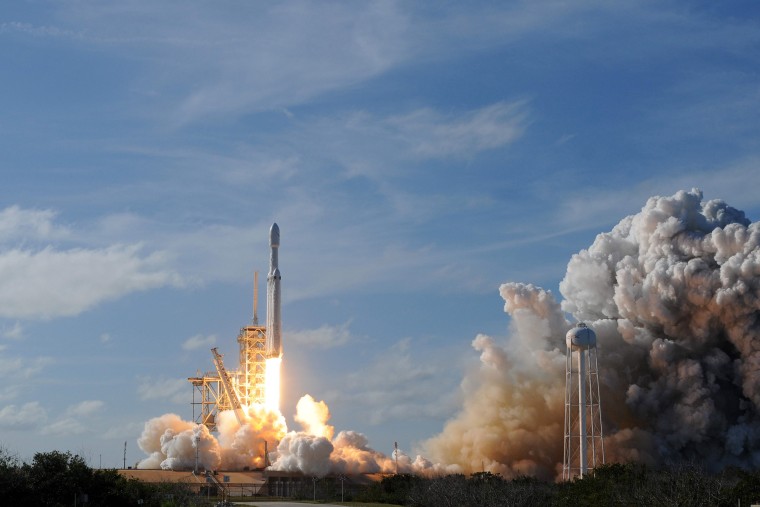
Spaceflight has traditionally been a government-led activity — and it's never been cheap. But the stratospheric cost of putting people and payloads into space is finally starting to fall, thanks in part to the rise of SpaceX and other private spaceflight companies.
Here’s a look at what it costs to go to space, whether it’s another satellite that needs to be placed in orbit or an adventurous billionaire looking for a joyride around the moon .
Sending up a satellite
Using its 230-foot-tall Falcon 9, SpaceX charges $62 million to send into orbit commercial satellites weighing up to 50,000 pounds. The closest American competitor is the United Launch Alliance Atlas V, which starts at $73 million for a 41,000-pound payload .
Science Sign Up for the Daily MACH Newsletter
Those are just starting prices; government agencies typically pay more for a long list of extra services. The Air Force, for example, is paying SpaceX $96.5 million to launch a GPS satellite in 2019 .
Flying to the International Space Station
Since NASA mothballed its space shuttles in 2011, NASA has relied on the Russian Soyuz spacecraft to get astronauts to the ISS. Russia has been steadily raising the price of Soyuz seats, reaching $82 million each in 2015. The agency last purchased Soyuz seats for $75 million apiece in 2017.
NASA hopes to end its reliance on Russia in 2019, when SpaceX's Crew Dragon and Boeing's Starliner capsules begin “taxi” flights to the ISS. Seats on those spacecraft are expected to cost about $58 million .
How much would I have to pay for a flight into space?
Depending on where you're going, a ticket could set you back anywhere from $250,000 to tens of millions of dollars.
If you're looking simply to cross the 62-mile-high Karman line that marks the boundary between the upper atmosphere and outer space, Virgin Galactic says it will take you there for $250,000. The company says about 650 people already have tickets for the suborbital flights, to be made aboard a winged vehicle called SpaceShipTwo. A date for customer flights has yet to be announced.
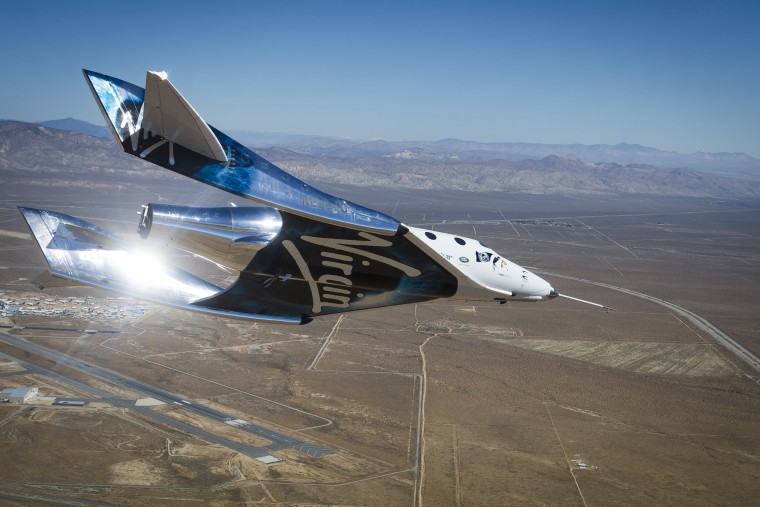
Jeff Bezos’ rocket company, Blue Origin, plans something similar — sending space tourists on brief suborbital flights using its New Shepard rocket system. The company has yet to set ticket prices or say when paid flights might begin.
Virgin Galactic and Blue Origin passengers will join the fewer than a dozen private citizens who have funded their own trips into space. From 2001 to 2009, the Vienna, Virginia-based firm Space Adventures worked with Russia’s space agency to send eight people to the ISS on flights lasting 10 or more days.

Space A colossal elevator to space could be going up sooner than you ever imagined
The world's first private astronaut, a wealthy American engineer named Dennis Tito, reportedly paid $20 million to spend eight days in space in 2001. More recently, Guy Laliberté, the co-founder of Cirque du Soleil, shelled out $35 million for an ISS trip in 2009 . Space Adventures still advertises Soyuz flights and plans to start booking trips to the ISS aboard Boeing’s Starliner.
In September 2018, SpaceX CEO Elon Musk announced that Japanese billionaire Yusaku Maezawa would ride the company’s yet-to-be-built Big Falcon Rocket on a trip around the moon. Neither Musk nor Maezawa, who said he would take along seven artists, would discuss the mission’s cost.
What about other rockets?
Small satellites may qualify for a free ride to space through NASA’s Educational Launch of Nanosatellites program, which helps universities and research groups fly standardized satellites called CubeSats aboard rockets as secondary payloads.
If your satellite can’t hitch a free ride, you can book a NASA sounding rocket to the edge of space for as little as $1 million . For orbital flights of payloads weighing less than 500 pounds, Los Angeles-based Rocket Lab offers launches of its Electron rocket from New Zealand for about $5 million .
From there, the price goes up steeply. Northrop Grumman's Pegasus rocket, which is air-launched from the belly of a jumbo jet, can place 1,000 pounds in orbit for about $40 million . Stratolaunch, a new venture bankrolled by Microsoft co-founder Paul Allen, plans to launch Pegasus rockets from its own colossal airplane before offering an expanded line of rockets capable of carrying up to 13,000 pounds. The company has yet to disclose prices.
NASA is developing its Space Launch System, which will carry astronauts to the moon and Mars. The rocket’s per-launch cost has not been disclosed, but the agency now spends at least $2 billion per year on the project. The maiden flight isn’t expected until 2020.
WANT MORE STORIES ABOUT SPACE TRAVEL?
- NASA solar probe to go where no spacecraft has gone before
- Space shuttle relic to be resurrected as deep-space habitat
- The animals that paved the way for humans in space
FOLLOW NBC NEWS MACH ON TWITTER , FACEBOOK , AND INSTAGRAM .
Here's How Much A Ticket On A SpaceX Flight To The Moon Will Cost
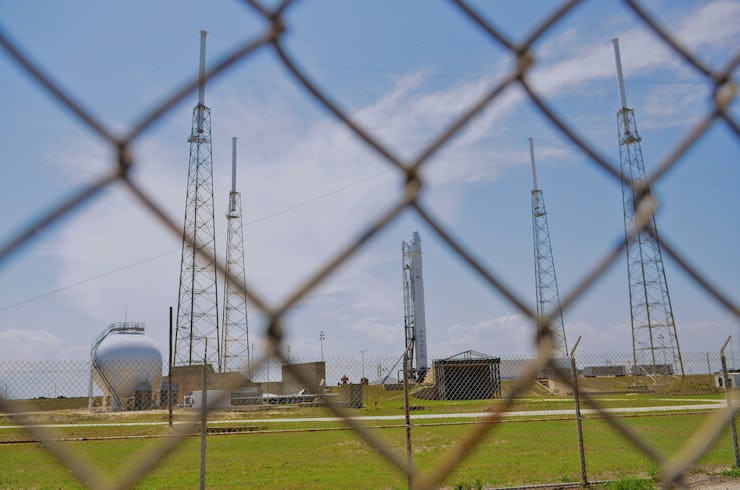
SpaceX is sending two private citizens to the moon, and all things considered, it won’t cost all that much, if you happen to be a billionaire.
On Monday, SpaceX CEO Elon Musk announced that his company will fly two private individuals — not current astronauts, that is — on a trip around the moon and back on the Dragon 2 spacecraft.
The mission is tentatively scheduled for “late 2018,” but depends on a huge number of variables before it can go ahead. The SpaceX press release after the announcement notes that the private flight team has already paid a “significant deposit” to go to the moon and back, but Musk didn’t give an exact number as to what a ticket would cost. He did, however, drop a pretty big hint: during the press conference, Musk told reporters that a trip around the moon would cost about the same as a private trip to visit the International Space Station: about $35 million.
But that cost doesn’t quite line up with what’s on SpaceX’s website . The Dragon 2 spacecraft will go into space on top of a Falcon 9 Heavy rocket, which has a listed price of $90 million per launch on a late 2018 timeframe.
However, $35 million could be for a ticket , singular. The first private mission (and most Dragon 2 missions) will hold at least two astronauts, so it’s possible that Musk means the total cost will be more than $70 million, which would put it closer to a current estimate. NASA currently pays Roscosmos about $81.7 million per seat on the Soyuz capsule to get its astronauts to the ISS.
SpaceX will have no shortage of customers — if the cost to fly is around $35 million, there are thousands of individuals with a net worth high enough to justify that cost, assuming they’re willing to risk their life in the process. The company wants to conduct health and fitness tests and “begin initial training” for the private astronauts later this year, and said that “other flight teams have also expressed strong interest.” We’ll find out who the multi-millionaire guinea pigs are “contingent upon their approval and confirmation of the health and fitness test results,” and eventually, they’ll probably say how much they paid for a round-trip ticket to the moon.
- Space Science
NASA's Artemis 2 moon mission: Live updates
Nasa's artemis 2 mission is returning astronauts to the moon for the first time since 1972. see live mission updates here..

You can launch a Space Launch System of your own with this Estes NASA SLS model rocket for a 1:200 scale version of NASA's moon megarocket. Read more about it .
NASA's Artemis 2 lunar mission in 2024 will send the first astronauts around the moon in nearly 50 years. The mission will launch four astronauts around the moon on a lunar flyby aboard an Orion spacecraft using a Space Launch System rocket.
Artemis 2 is an eight day mission that will send three NASA astronauts and one Canadian Space Agency astronaut around the moon on a free-return trajectory. It is the last test flight before the Artemis 3 crewed moon landing mission in 2025.
See our complete coverage of the Artemis 1 mission below.
Meet the Artemis 2 crew | Artemis 2 explained | Latest news

Tariq Malik is the Editor-in-Chief of Space.com and has been covering human spaceflight for more than 18 years and space exploration overall for more than 20 years. He covered the final 22 space shuttle missions and NASA's ongoing International Space Station and Artemis program.

Elizabeth Howell first became interested in space after watching the movie "Apollo 13" as a teenager in 1996, kickstarting a lifelong fascination with the 1960s and 1970s human lunar landing program. She has watched five human spaceflight launches since and participated in a simulated Mars mission.
that time when 3 moon astronauts once flew, supersonic-style, by a NASA lunar rocket on the pad
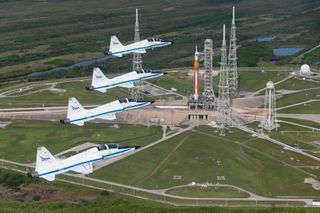
Artemis 2 commander Reid Wiseman helped organize a special event in 2022: he was part of a group of astronauts flying the famous T-38 jet trainers past the Artemis 1 SLS on the launch pad on Aug. 23, 2022.
Nobody knew it back then, but three of the four Artemis 2 crew were in the tight formation: Wiseman, NASA mission specialist Christina Koch and Canadian Space Agency mission specialist Jeremy Hansen . (Only absent was NASA pilot Victor Glover , who was away on other duties at the time.)
Read more: What's it like to buzz an Artemis SLS moon rocket with a supersonic jet? NASA's Artemis 2 commander tells all
Artemis 2 moon astronauts meet President Biden
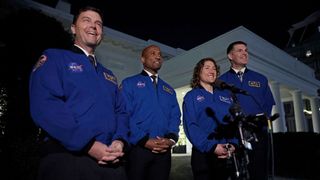
NASA's Artemis 2 moon crew, led by NASA , met with U.S. President Joe Biden on Thursday (Dec. 14) and talked with reporters afterwards about the support Biden is offering for the historic mission, the first to fly to the moon with humans since 1972.
The crew talked to Biden "about their training and science plans for the mission, set to launch in late 2024," according to a small update on NASA HQ Photo's X account (formerly Twitter). Aside from Wiseman, the Artemis 2 astronauts include NASA pilot Victor Glover (the first person of color to leave low Earth orbit ), NASA mission specialist Christina Koch (the first woman) and Canadian Space Agency astronaut Jeremy Hansen (the first non-American).
Read more: Artemis 2 astronauts meet President Biden to talk America's next trip to the moon
Artemis 2 moon mission hardware building up at NASA centers
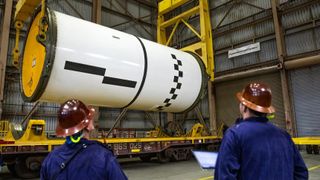
NASA's Artemis 2 mission remains on track to send four astronauts around the moon in late 2024. The crew is continuing their training while the hardware that will carry them to space — the Orion capsule and giant Space Launch System (SLS) rocket — is being readied at different NASA centers.
Read more: NASA building giant Artemis 2 moon rocket ahead of 2024 launch
Artemis 2 astronauts autograph moon rocket

The Artemis 2 crew signed their names Monday (Nov. 27) on the adapter for their Orion spacecraft , which will be mounted on top of the massive Space Launch System (SLS) rocket. The rocket will send them around the moon in 2024.
The four astronauts, wearing cleanroom outfits, were visiting NASA's Marshall Space Flight Center in Huntsville, Alabama. The adapter will be under Orion during the launch, the first human one to the moon since 1972.
Read more: Artemis 2 moon astronauts autograph their own rocket 1 year before launch
Canadian Space Agency names backup astronaut for Artemis 2

The Canadian Space Agency may bring the third Canadian woman into space as soon as 2024, should she be needed for a moon mission.
Fire scientist Jenni Gibbons was named Tuesday (Nov. 22) as backup for Jeremy Hansen , the CSA astronaut flying around the moon with Artemis 2 in 2024. The CSA is a signatory to the NASA -led Artemis Accords that has two purposes: peaceful space exploration norms and for some participants, moon missions.
That wasn't the only big space news for CSA on Tuesday. Canada typically receives missions every six years based on its ISS contributions, and current spacecraft capacity. The next long-duration mission will be with Joshua Kutryk, a test pilot with the Royal Canadian Air Force, will fly on the first operational Boeing Starliner mission in 2025 for a half-year mission to the ISS.
Read more: Canada assigns astronauts to launch on Boeing's Starliner, back up Artemis 2 moon mission
Artemis 2 readies for astronaut moon launch 1 year after Artemis 1
Space fans, get ready to start your moon engines.
NASA's Artemis 1 uncrewed moon mission lifted off from NASA's Kennedy Space Center (KSC) in Florida on Nov. 16, 2022. One year later, the next moon rocket ride for astronauts is in testing for a new mission that could launch in late 2024.
The crewed mission, known as Artemis 2 , will send four astronauts around the moon. As the quartet continue their complex training, their Space Launch System (SLS) rocket, side boosters, Orion spacecraft and other key elements are under assembly in various parts of the United States.
Read more: 1 year after Artemis 1 launch, NASA readies Artemis 2 to shoot for the moon again (video)
Artemis 2 moon spacecraft powers on ahead of 2024 mission
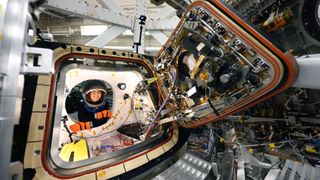
The Orion spacecraft for Artemis 2 powered on this week successfully ahead of its historic moon mission with four astronauts in 2024.
Seeing power flow to Orion was a large milestone following the moment when the American-made crew module and European Service Module (ESM) joined at NASA's Kennedy Space Center in mid-October, according to the European Space Agency (ESA).
Once ready, Orion will carry NASA 's Reid Wiseman , Victor Glover , Christina Koch and the Canadian Space Agency 's Jeremy Hansen , who are undergoing 18 months of training to get ready for the first human moon mission in 52 years.
Read more: NASA powers up Artemis 2 Orion spacecraft ahead of 2024 moon mission
Boosters assemble! Artemis 2 moon rockets come together in new video
An astronaut moon rocket comes together at NASA in a new epic video.
Twin rocket boosters for Artemis 2 , now being assembled at NASA's Kennedy Space Center , will assist the agency's powerful Space Launch System rocket as it sends four astronauts on a round-the- moon mission in 2024.
You can watch KSC teams piece together parts of each booster's aft assembly – the booster part that steers them during flight.
Read more: Watch NASA build Artemis 2 astronaut moon rocket boosters ahead of 2024 launch (video)
Canadian astronaut ready for the moon, his first mission in space
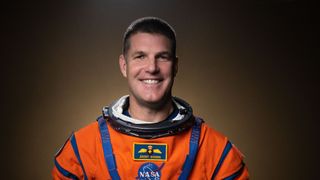
After 15 years waiting for space, Canadian Space Agency astronaut Jeremy Hansen is getting ready for the moon . He is one of the mission specialists aboard Artemis 2 , which aims to launch four astronauts in 2024, and says the first seven months of training for the NASA mission is reinforcing to him all the years of experience he already has in assisting with human space missions and space policy.
"The only thing that does feel different is that there is this personal aspect of, 'I've been working to actually fly in space and do the astronaut aspects'," Hansen told Space.com in an exclusive 30-minute interview on Friday (Oct. 27.) "It does feel like it's getting closer, and much closer, than it's ever felt before. So there is that sense, and that is really fun for me."
Read more: Artemis 2 moon astronaut says crew is ready for ambitious 2024 mission
Artemis 2 mobile launcher soaked in 'water flow test'
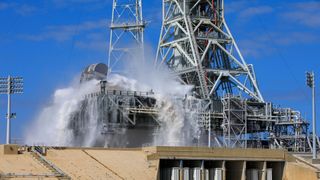
The mobile launcher for Artemis 2 , a big moon mission, got soaked Tuesday (Oct. 24) in a mission safety test ahead of the 2024 mission.
The mobile launcher that will be used to launch the powerful Space Launch System rocket had a "water flow test", the third at NASA's Kennedy Space Center to "verify the overpressure protection and sound suppression system is ready for launch," NASA officials wrote in a brief statement Thursday (Oct. 26).
"During liftoff, 400,000 gallons (1.5 million liters) of water will rush onto the pad to help protect NASA's SLS rocket, Orion spacecraft , mobile launcher, and launch pad from any over pressurization and extreme sound produced during ignition and liftoff," agency officials added.
Read more: Watch NASA's Artemis 2 mobile rocket launcher get soaked during water deluge test (video)
Orion spacecraft for Artemis astronaut moon mission assembled
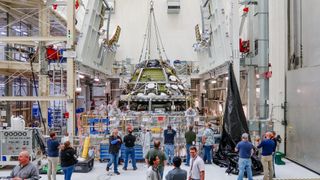
NASA's astronaut moon spacecraft is under assembly. The Orion spacecraft for Artemis 2 's round-the- moon mission in 2024 had its crew and service modules joined at NASA on Oct. 19.
More tests are planned on the joined pieces, including power-on examinations and altitude chamber testing. It's a significant milestone for the mission that will carry four astronauts to lunar realms in just over a year.
Read more: Artemis 2 Orion spacecraft comes together ahead of 2024 moon mission (photos)
NASA shows off Artemis moon astronauts' electric car for launch pad rides

NASA recently displayed the shiny inside of its new fleet of astronaut cars from Canoo Technologies Inc., all assigned to the Artemis program . It was the first look at the interior ahead of the debut crew Artemis 2 , using the all-electric vehicles to get the the launch pad for their round-the-moon mission starting in 2024.
The moon crew's car interior came to light at a racing event: The Formula 1 (F1) Grand Prix of the United States in Austin, Texas between Oct. 20 and 22. Artemis 2 astronauts Reid Wiseman (from NASA ) and Jeremy Hansen (from the Canadian Space Agency ) also were there on Oct. 22 talking with some of the racing companies.
Read more: NASA's Artemis moon astronauts will ride to the launch pad in these sleek electric cars (photos)
Artemis 2 core stage faces welding issues: report
While Artemis 2 remains on track for its round-the-moon mission with astronauts in 2024, welding issues on the core stage of its massive rocket are ongoing, a report suggests.
The Space Launch System (SLS) rocket's core stage, expected to launch the four-astronaut Artemis 2 around the moon , is facing unspecified "weld issues" during assembly at NASA's Marshall Space Flight Center in Alabama. The issue was reported in NASA Spaceflight and NASA did not immediately respond to queries from Space.com about the matter.
Read more: Welding issues stall Artemis 2 moon rocket's assembly, but 2024 mission still on track: report
How Artemis 2 moon astronauts will live in space
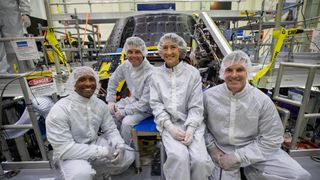
The Artemis 2 astronauts and other personnel are testing living activities the crew will do on the 10-day moon mission, including sleeping, eating and of course, going to the bathroom. The four astronauts will spend all of their time in the Orion spacecraft , learning how to live and work together in a small space.
Read more: Here's how Artemis 2 astronauts will exercise, sleep and use the toilet on their moon mission (photos)
Artemis 2 moon astronauts rehearse for launch day

The Artemis 2 moon astronauts practiced for launch day at NASA's Kennedy Space Center in Florida on Wednesday (Sept. 20), complete with spacesuits and a drive to the launch pad to ascend the mobile launcher.
"I just had images of all those Apollo launches and shuttle launches that I saw as a kid and it was unreal," Artemis 2 pilot Victor Glover said in a NASA statement . "I actually had to stop and just stay in the moment to really let it all sink in."
Aboard the round-the- moon mission, slated to launch in late 2024, will be NASA commander Reid Wiseman , NASA pilot Victor Glover (the first person of color to leave Earth orbit), NASA mission specialist Christina Koch (the first woman to do so) and the Canadian Space Agency 's Jeremy Hansen (the first non-American).
Read more: Artemis 2 astronaut crew suits up for moon launch dress rehearsal (photos, video)
Artemis 2 moon astronauts do splashdown training with US Navy

The Artemis 2 astronauts worked with the U.S. Navy team recently on splashdown operations. The Navy and NASA are training to recover the four-person crew, which will circle around the moon no earlier than November 2024, after they complete their 10-day mission.
While the crew familiarized themselves with the team and procedures, NASA and the Department of Defense practiced recovery operations nearby San Diego using equipment such as helicopters, boats and the USS John P. Murtha.
Read more: See Artemis 2 moon astronauts train with US Navy for Orion splashdown (photos, video)

NASA finishes first practice countdown for Artemis 2
The Artemis 2 launching team at NASA recently finished their first dress rehearsal to send four astronauts safely into space to go around the moon.
This crucial "sim" is one of many that NASA will do for the November 2024 mission. The mission includes NASA astronauts Reid Wiseman, Victor Glover and Christina Koch, along with Canadian Space Agency astronaut Jeremy Hansen.
Read more: NASA practices for 2024 launch of Artemis 2 moon mission
Artemis 2 astronauts deep in moon training
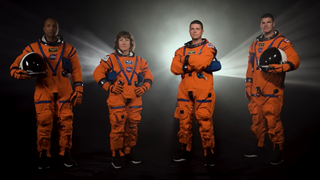
The first moon crew in 52 years, Artemis 2 , includes a lot of diversity. They've been to the International Space Station , the U.S. Senate, in combat and in many other locations.
Now as the foursome — NASA's Reid Wiseman, Victor Glover, Christina Koch and the Canadian Space Agency's Jeremy Hansen — get ready for the moon , lead training officer Jacki Mahaffey told Space.com how she is using their experience in training.
Read more: How Artemis 2 astronauts are training for their 2024 moon mission
Artemis 2 crew member praises NASA supersonic jet
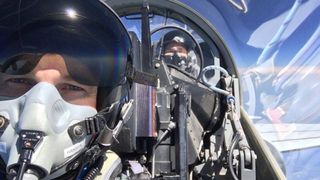
A moon astronaut recently honored the decades of supersonic trainer work that NASA has put in with its T-38s.
Artemis 2 Canadian Space Agency (CSA) astronaut Jeremy Hansen praised the supersonic T-38 trainer jet for its ability to keep astronauts on their toes while in flight. "We use these airplanes because they're challenging," Hansen said in a video released Tuesday (July 18) on the CSA's social media channels.
Manufacturer Northrop Grumman says more than 72,000 U.S. Air Force pilots have trained in the T-38 since it first rolled off the line in 1961. Though it was only manufactured until 1972, more than 500 continue to be used by both the Air Force and NASA.
Read more: Artemis 2 moon astronaut explains risk of flying NASA's supersonic training jet
3 Orion spacecraft line up for their moon missions

Three crew-carrying spacecraft are getting ready for their big moon missions.
The Orion capsules for the Artemis 2, Artemis 3 and Artemis 4 moon missions are coming together at NASA's Kennedy Space Center in Florida under stewardship of contractor Lockheed Martin.
"The future of @NASA_Orion is looking pretty good," Lockheed officials wrote on Twitter Friday (July 14) of the three spacecraft, each of which is expected to ferry astronauts to the moon starting in late 2024 or so.
Read more: These 3 Orion spacecraft will carry Artemis astronauts to the moon (photo)
Artemis 2 astronaut plays cowboy at Calgary Stampede

Canadian Artemis 2 moon astronaut Jeremy Hansen, partnering with his borrowed horse Cisco , pretended to be a cowboy at Canada's Calgary Stampede fair last week in the western province of Alberta.
NASA Administrator Bill Nelson, who flew on the space shuttle Columbia in 1986 while a member of the U.S. House of Representatives, also visited the event. The two appeared in flight suits and cowboy hats as part of the celebration of cowboy culture, which annually draws a million participants.
Read more: Yeehaw! NASA chief and Artemis 2 moon astronaut play cowboy for a day (photo)
Artemis 2 astronaut completes vision quest

An Artemis 2 astronaut recently finished a vision quest to help prepare for his upcoming trip around the moon.
Jeremy Hansen recently participated in the four-day Indigenous rite of passage as part of Artemis 2 mission training, the Canadian Space Agency astronaut tweeted.
"I would like to express my gratitude to Anishinaabe Elder David Courchene III 'Sabe' for the gracious invitation," Hansen said of the ceremony , which took place at Turtle Lodge in Manitoba on the lands of the Sagkeeng First Nation (also known as Fort Alexander).
On Tuesday (June 13), Hansen added he has completed the ceremony and "I have a renewed appreciation for all that Mother Earth provides, especially water."
Read more: Artemis 2 astronaut goes on vision quest to prepare for moon mission
Artemis 2 mission benefits from Canadian winter experience
Cold weather is helping to boost the fortunes of Canada in space, including its contributions to Artemis 2 .
Astronaut Jeremy Hansen will the first non-American to leave low Earth orbit, alongside three NASA crewmates, no earlier than 2024. Canadian leader and Prime Minister Justin Trudeau argues that Canada's winter experience is one big reason for its success in space.
Trudeau emphasized that working in Canada's north helped with numerous kinds of technology, including the Canadarm robotic arm series that has provided Canadian astronaut seats for nearly 40 years.
The Arctic in particular represents "some of the harshest environments" available to humans, and Trudeau joked that when asked about why Canada does so well in space, he responds: "Obvious. Winter."
Read more: Winter is coming: Artemis 2 moon mission gets boost from Canadian cold
Artemis 2 astronauts thrilled for moon mission
The four astronauts of NASA's Artemis 2 mission are thrilled, to say the least, to be on the crew that will send the first humans to the moon in more than 50 years. You can read our full story here .
Set to launch on a Space Launch System megarocket in 2024, NASA astronauts Reid Wiseman, Victor Glover, Christina Koch and Jeremy Hansen of the Canadian Space Agency will fly around the moon, much like Apollo 8, on their Orion spacecraft.
Here's what they had to say of the mission today:
Commander Reid Wiseman: "This is a global effort, Artemis 2, and it's only going to get larger with Artemis 3 and beyond as we get private spaceflight involved. SpaceX is building our lander for Artemis 3. So to the NASA workforce, to our program managers, our center directors that are here, the amazing political support that we feel right now to bring our country together to bring our entire world together to go explore to get to Mars and beyond, we say a huge thank you."
Pilot Victor Glover: " We need to celebrate this moment in human history. Because Artemis two is more than a mission to the moon and it's more than a mission that has to happen before we send people to the surface of the moon. It is the next step on the journey that gets humanity to Mars. "Human spaceflight is like a relay race, and that baton has been passed generation to generation and from crew member to crew member from the Gemini, Mercury, Gemini, Apollo, Apollo Soyuz, Skylab Mir, the shuttle, International Space Station, commercial crew and and now the Artemis missions. We understand our role in that. And when we have the privilege of having that baton. We're going to do our best to run a good race to make you proud. I pray that God will bless this mission. But I also pray that we can continue to serve as a source of inspiration for cooperation and peace, not just between nations, but in our own nation."
Mission specialist Christina Koch: "When I think about this mission, that's a relay race with international partners, it's all so awesome in and of itself.
"We are going to launch for Kennedy Space Center to the work of the exploration Ground Systems team. We're going to hear the words go for launch on top of the most powerful rocket NASA's ever made the Space Launch System, and we're gonna ride that rocket for eight minutes into Earth orbit. We're not going to go to the moon right away. We're gonna stay in an amazing high orbit, reaching a peak of tens of thousands of miles while we test out all the systems on Orion and see how it maneuvers in space. And then if everything was good, we're heading to the moon.
"It will be a four day journey, going a quarter of a million miles, continuing to test out every bit of Orion going around the far side of the moon, heading home going through the Earth's atmosphere at over 25,000 miles per hour and splashing down in the Pacific. So am I excited? Absolutely. But my real question is Are you excited? I asked that because the one thing I'm most excited about is that we are going to carry your excitement, your aspirations, your dreams with us on this mission. Artemis to your mission."
Mission specialist Jeremy Hansen: "Our scientists or engineers, the Canadian Space Agency, the Canadian Armed Forces across government, all of our leadership working together under a vision to take step by step and all of those have added up to this moment where a Canadian is going to the moon with our international partnership and it is glorious."
Artemis 2 Moon Astronauts Revealed!
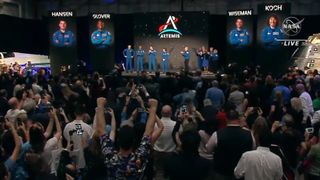
NASA chief Bill Nelson has unveiled the first astronaut crew to visit the moon in more than 50 years. They Artemis 2 crew are:
Commander Reid Wiseman, NASA
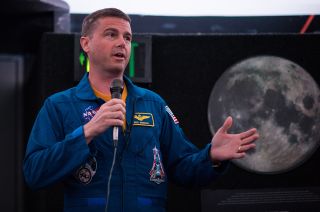
Reid Wiseman, 47, spent 165 days in Earth orbit on his first mission, a 2014 flight to the ISS. A native of Baltimore, Maryland, and former fighter pilot for the U.S. Navy, he was selected for NASA's 20th astronaut class in 2009. Wiseman recently served as chief of NASA's astronaut office from 2020 to 2022.
Pilot Victor Glover, NASA
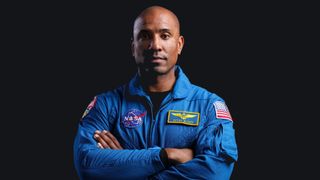
Victor Glover, 46, became a NASA astronaut in 2013. He flew as pilot of SpaceX's first operational crewed spaceflight (Crew-1) and logged 167 days on the ISS in 2021. Born in Pomona, California, he is an engineer and captain in the U.S. Navy. Glover was the first Black astronaut to serve on a space station crew.
Mission Specialist Christina Koch, NASA

Christina Koch, 44, was born in Grand Rapids, Michigan and raised in Jacksonville, North Carolina. A member of NASA's 21st astronaut class selected in 2013, Koch set a record aboard the International Space Station for the single longest mission by a woman at 328 days. During that 2019 stay, she was also one-half of the first-ever all-female spacewalk. Koch is an engineer and former U.S. National Oceanic and Atmospheric Administration (NOAA) station chief.
Mission Specialist Jeremy Hansen, Canadian Space Agency
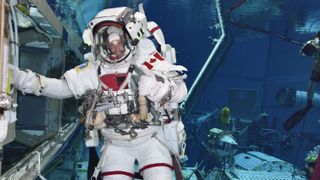
Jeremy Hansen, 47, was chosen to join Canada's astronaut corps in 2009. A colonel in the Royal Canadian Air Force, he was born in London, Ontario. Though Artemis 2 will be his first time in space, Hansen served as an aquanaut aboard the Aquarius underwater lab in 2014 and took a turn as a "cavenaut" as part of the European Space Agency's CAVES astronaut training course the year prior.
NASA Artemis 2 moon crew announcement underway
NASA's Artemis 2 moon astronaut crew reveal is underway live on NASA TV.
Speaking before a huge crowd at the Ellington Field in Houston, NASA's chief astronaut Joe Acaba began by inviting the entire astronaut corps to the stage.
"Your Artemis 2 astronauts are in the room with you ... I am not one of them," he said.
Canada's Prime Minister François-Philippe Champagne hailed the 60 year partnership of NASA + CSA and Canada's contribution of the CanadArm3 for the Gateway station around the moon: "We're going to the moon!" he cheered.
NASA Administrator Bill Nelson is now preparing to introduce the crew.
NASA to announce Artemis 2 crew today

At long last, we're going to learn which astronauts will fly NASA's first crewed mission to the moon of the Artemis generation.
Today, April 3, NASA and the Canadian Space Agency will announce the four astronauts who will fly on the Artemis 2 mission around the moon in 2024. That crew is expected to include one Canadian astronaut and three NASA astronaut s, but exactly who is yet to be revealed.
NASA will announce the crew in an event at Ellington Field near the Johnson Space Center in Houston, Texas at 11 a.m. EDT (1500 GMT). Space.com staff writer Elizabeth Howell is on scene at the event alongside contributor Robert Pearlman of collectSPACE.com.
You'll be able to watch it live on Space.com , as well as at the top of this page at start time.
While we wait, here's a nifty trailer from NASA for today's Artemis 2 crew reveal.
- 2 Slovenia signs NASA's Artemis Accords for cooperative space exploration
- 3 Solar eclipse 2024: Live updates
- 4 ESA graduates the 'Hoppers': Europeans, Australian pass astronaut basic training
- 5 Watch the Full Pink Moon 2024 bloom in the night sky tonight
- Share full article
Advertisement
Supported by
NASA Plans February Moon Launch With Giant Rocket
A flight of the Space Launch System and Orion capsule without astronauts aboard is planned for early next year, a first, long-delayed step toward returning astronauts to the moon’s surface.

By Michael Roston
[Follow the latest updates on SpaceX ’s NASA crew-3 launch mission.]
NASA set dates on Friday for its giant rocket to launch a spacecraft to the moon and back, beginning in mid-February next year. No, for real this time.
In a news conference, officials from the space agency announced a two-week period beginning Feb. 12 for a flight — without astronauts aboard — of the Space Launch System, the biggest rocket flown by the agency in decades. It will loft Orion, a capsule for transporting astronauts to deep space, on an uncrewed trip that orbits the moon then returns to Earth.
“We are on track to fly, and this team will be ready when our flight hardware is ready,” said Mike Sarafin, the NASA official who is the mission’s manager.
Whether NASA will proceed with this February timeline depends on the results of testing on the ground leading up to the launch window, including a January dress rehearsal of the launch. The officials also announced more two-week flight periods in March and in April, both without astronauts, which are based on the moon’s alignment with Earth.
The long-delayed flight, called Artemis-1, is aimed at testing the safety of the vehicle. A future flight, Artemis-2, will carry a crew on a similar voyage, which will echo the Apollo 8 mission in 1968. NASA hopes to be able to carry astronauts back to the lunar surface, including the first woman and first person of color, in the coming years.
No humans have visited the moon since the Apollo 17 mission in 1972. In the years that followed Apollo, NASA turned its attention to the space shuttles and to building a space station in low-Earth orbit. The agency possessed no equipment for venturing farther from the planet.
To send people back to the moon, NASA needs a rocket approaching the power of the Saturn V that carried the Apollo astronauts. In 2011, the Obama administration announced the beginning of the Space Launch System, a rocket based on designs from Constellation, an earlier scrapped program.
S.L.S. is a monster of a rocket , capable of lofting 70 metric tons to space. A modified version of the rocket that will fly in the future would heft 130 tons — even more than the Apollo-era launcher. Flights of the Space Launch System will be expensive, about $2 billion per launch, although Congress has steadily funded the program. NASA has so far spent $10 billion on the rocket, plus another $16 billion on the Orion capsule.
But little has gone according to plan with S.L.S. NASA scheduled its first flight for 2017. It failed to meet that goal, and a 2018 audit faulted poor performance by Boeing, the main contractor working on the rocket’s booster stage, for much of the missed deadlines. As problems persisted, the Covid-19 pandemic added to delays for the program.
In January 2021, the rocket was finally ready for its first big test, a sustained firing of the engines that would simulate the stresses of a trip to orbit. The test was supposed to last for eight minutes, but was cut off after only about a minute .
During the second attempt in March, the rocket recorded a sustained 499.6-second burn of the giant engines that sent a giant cloud of steam over the massive test stand in Mississippi. Once the test was deemed a success, the agency shipped the massive rocket to the Kennedy Space Center in Florida to begin preparations for flight.
This week, the Orion spacecraft was lifted atop the rocket and put into place. Together, they stand 322 feet tall, or higher than the Statue of Liberty and its base .
If an assortment of spaceflights stick to their schedules, 2022 could be one of the busiest years the moon has ever seen. In addition to Artemis-1, NASA plans to send a small satellite to orbit the moon and a pair of robotic landers carrying a variety of private cargo to the lunar surface. China, Russia , India and South Korea have all announced plans for lunar orbits or landings in 2022.
President Trump committed the United States to returning astronauts to the moon by 2024 , a target the Biden administration has not changed. But analysts have been skeptical of reaching that ambitious goal, given that much of the hardware — including a spacecraft to actually land astronauts on the lunar surface — is not yet built.
NASA awarded a contract to SpaceX , the private company founded by Elon Musk, to use its Starship spacecraft as a lunar lander. Starship is still in its prototype stage and has not yet launched to orbit. Blue Origin, the company founded by Jeff Bezos of Amazon, also filed a lawsuit in federal court over the contract, arguing that NASA awarded it to SpaceX unfairly . Should a judge side with Mr. Bezos’ company, it could force NASA to start again, further delaying the lunar lander program.

Sync your calendar with the solar system
Never miss an eclipse, a meteor shower, a rocket launch or any other astronomical and space event that's out of this world.
Michael Roston is the senior staff editor for science. He was previously a social media editor for The Times and a home page producer. More about Michael Roston
What’s Up in Space and Astronomy
Keep track of things going on in our solar system and all around the universe..
Never miss an eclipse, a meteor shower, a rocket launch or any other 2024 event that’s out of this world with our space and astronomy calendar .
Scientists may have discovered a major flaw in their understanding of dark energy, a mysterious cosmic force . That could be good news for the fate of the universe.
A new set of computer simulations, which take into account the effects of stars moving past our solar system, has effectively made it harder to predict Earth’s future and reconstruct its past.
Dante Lauretta, the planetary scientist who led the OSIRIS-REx mission to retrieve a handful of space dust , discusses his next final frontier.
A nova named T Coronae Borealis lit up the night about 80 years ago. Astronomers say it’s expected to put on another show in the coming months.
Is Pluto a planet? And what is a planet, anyway? Test your knowledge here .
Watch CBS News
Apollo 11: How much did it cost to land astronauts on the moon?
By William Harwood
July 16, 2019 / 11:02 AM EDT / CBS News
In 1961, when President John F. Kennedy committed the nation to sending an astronaut to the moon "before this decade is out," the federal budget enjoyed a surplus and economists were calling for government spending to stimulate the economy.
Even so, the final price tag still boggles the mind. Between 1960 and 1973, NASA spent $28 billion developing the rockets, spacecraft and ground systems needed for what became the Apollo program. According to a recent analysis by the Planetary Society, that translates into an estimated $288.1 billion in inflation-adjusted dollars.
That's roughly equivalent to spending NASA's current annual budget on a single project and sustaining that effort for more than a decade.
Now, 50 years after the first Apollo moon landing , NASA is aggressively pursuing a Trump administration directive to return astronauts to the lunar surface in 2024. After five decades of technological progress, NASA will not be starting from scratch, and the total cost will be much lower than the price tag for Apollo.But it will not be cheap, and billions in additional funding will be required.
The space agency has not revealed any detailed cost estimates, and it's not yet known whether Congress will go along. But a new Gallup poll shows most Americans continue to support space exploration.
"Solid majorities of Americans feel that NASA's budget is justifiable and that it should be maintained or increased," the polling organization wrote on its website. "The 1969 moon landing's upcoming anniversary may have elevated the historic achievement in Americans' minds as of late, as their recall of the first man on the moon is stronger than it was 20 years ago.
"Americans are also slightly more positive in their views of the space program's performance — which could be key to seeing NASA's continued funding as the agency works toward achieving its next feat."
The Apollo 11 anniversary prompted the Planetary Society to reassess how much the world's first moon program ultimately cost.
Figuring out the true cost of Apollo mission
Casey Dreier, author of the analysis and senior space policy adviser for the Planetary Society, said the analysis was conducted because the historical record is incomplete, difficult to unravel and, in some cases, simply incorrect .
Given the Trump administration's directive to send astronauts back to the moon by the end of 2024 in the newly named Artemis program , budget estimates for the Apollo program and the money actually spent provide valuable insights into hurdles the new moon program will face on Capitol Hill.
"How much was spent on Apollo, and when, is relevant as NASA has once again been directed to return humans to the moon," he writes on the Planetary Society website. "To properly evaluate the seriousness of this directive, it makes sense to compare its spending proposals to the one data point we have for a successful human lunar mission.
"How much money did it take to do it the first time? How was it spent? And, perhaps most importantly, when did the money show up?"
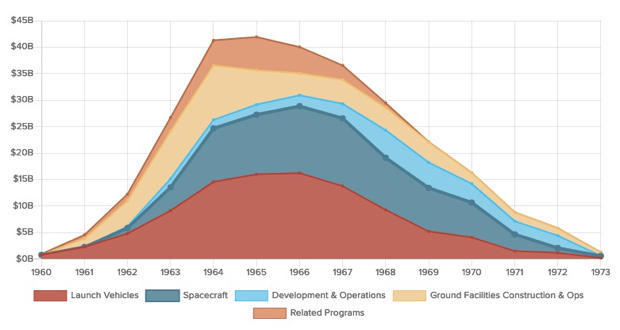
In reconstructing the cost of Apollo, Dreier evaluated official NASA budget submissions to Congress between 1961 and 1974, actual spending as reported by the space agency and countless supporting documents.
To adjust the results for inflation, he used NASA's New Start Index, designed specifically for aerospace projects, which is believed to provide more accurate insights compared to the Consumer Price Index, which focuses on household and consumer goods.
"The second method is to adjust the costs so that they occupy the same relative share of the nation's economy, or Gross Domestic Product (GDP), over time," Dreier wrote. "In other words, if Apollo occupied 2 percent of GDP in 1965, what is the equivalent of 2 percent of GDP in 2019?
"This approach answers the question: 'If the U.S. were to allocate resources to a space project to the same extent as it did for the lunar effort, how much would NASA have to spend today?' Think of this as a statement of economic priority."
The numbers, adjusted for inflation, are difficult to imagine in today's political climate.
In current-year dollars, the analysis shows, the Apollo command and service modules cost the equivalent of $39 billion to develop, the lunar module ran another $23.4 billion, and the giant Saturn family of rockets and the engines required to boost astronauts into Earth orbit and beyond cost nearly $100 billion to design, test and launch.
At the peak of Apollo program spending in 1966, Dreier says, NASA accounted for roughly 4.4% of the federal budget — 6.6% of discretionary spending — more than the Manhattan Project that developed the first atomic bomb.
In terms of relative GDP, that is, the spending required in 2019 to account for the same share of the economy as the Apollo project did in the 1960s, the Planetary Society calculates the equivalent of $702.3 billion would be required.
John Logsdon, a noted author and space historian, says even Kennedy had second thoughts about the enormous expenditures required to reach the moon.
In a meeting with NASA's administrator in September 1963, the president "worried that it's going to become a political liability for him for the '64 re-election," Logsdon said. "And he says popular support is waning, but we're kind of in mid journey and people will be glad we did it once it happens."
The day before Kennedy was assassinated in Dallas, he gave a speech in San Antonio "where he says we've thrown our cap over the wall of space and we have no choice but to follow it," Logsdon said.
Had the president not been shot, "my judgment is that, indeed, he would not have turned off the clock and that he would have continued to support the program," Logsdon said. "If cooperation (with the Soviet Union) was possible, he would have sought cooperation. But if it wasn't, I think he would have moved ahead."
A different calculation today
Today's political and economic realities are vastly different than the ones Kennedy faced.
"The one thing that people forget about Apollo is that the federal budget was in surplus and economists were calling for government spending to stimulate the economy in 1961," Logsdon said. "So the kind of trillion dollars a month deficit spending we're doing wasn't there at all. And I think that ... may be the overriding constraint on doing anything like Apollo."
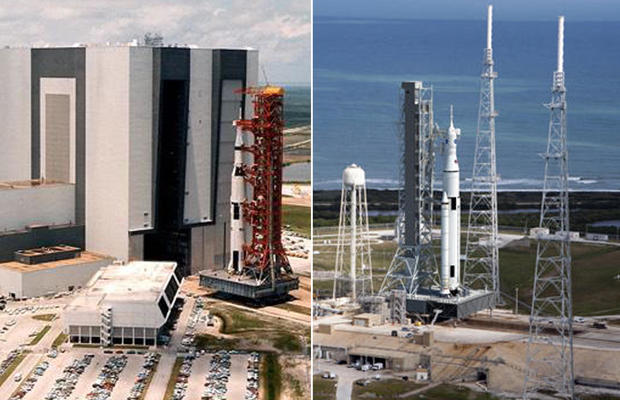
NASA's 2020 budget request, including $1.6 billion in supplemental funding to kick-start the Artemis moon program, comes to $22.6 billion. Of that total, $6.4 billion is directed to exploration, a 27% increase over 2019 levels.
Since 2005, NASA has spent by some estimates approximately $16 billion developing the re-purposed Orion crew capsule that will carry astronauts to and from the moon in the Artemis program and nearly $20 billion, according to at least one estimate, developing the huge Space Launch System (SLS) rocket needed to launch the lunar landing missions.
Both programs underwent extensive modifications, driving up costs, as program goals changed between the Bush, Obama and Trump administrations.
As it now stands, an initial unpiloted SLS test flight is planned for late next year or, more likely, 2021 with the first piloted flight of an Orion capsule expected in the 2022-23 timeframe. The first Artemis moon landing, using the third SLS booster and a yet-to-be designed lander, is planned for 2024.
"To date, the White House has proposed an additional $1.6 billion for Project Artemis, on top of the $5 billion spent annually on the Space Launch System, Orion, and related ground systems," Dreier writes.
"Compared to Apollo, this is a relatively modest investment. Looking forward, we should expect significant increases in spending associated with an accelerated lunar effort or adjust our expectations accordingly."

Bill Harwood has been covering the U.S. space program full-time since 1984, first as Cape Canaveral bureau chief for United Press International and now as a consultant for CBS News.
More from CBS News

Man who hoped to be first Black astronaut in 1960s finally heading to space

Spacecraft spots "spiders" scattered across surface of Mars

Veteran taikonaut, 2 rookies launched to Chinese space station

The 3 most affordable borrowing options right now

How Much Does a Trip to the Moon Cost?
Since the Apollo missions ended in the 1970s, the prospect of traveling to the moon has captured the public imagination. With recent technological advances and new ambitions in space exploration, the idea of commercial lunar travel is moving closer to reality. But how much would it actually cost to take a trip to the moon?
This article examines the complex factors that come into play when pricing a hypothetical moon voyage for space tourists. While an exact dollar value is elusive, we can analyze the expenses involved to estimate a lunar travel budget. Join us on a thought journey to the moon and back while exploring this astronomical question!
According to early projections, a trip to the Moon per passenger could range from $100 million to $150 million and more . Given the huge uncertainties and variables surrounding pioneering commercial space endeavors, estimating an exact dollar value for a moon trip is difficult. However, as technology progresses and spaceflight is proven safe and reliable over time, costs are expected to gradually decrease.
Major costs factored into early estimates include:
Vehicle Development:
- Designing and engineering new large orbital spacecraft capable of a lunar journey
- Constructing moon landers for surface touchdown (for landed missions)
- Test launches , safety improvements, and design iterations
Recurring Production Costs:
- Building each spacecraft – Billions invested per launch vehicle
- Engine production – Hundreds of millions per set of flight engines
- Operational labor – Thousands of engineers required for launches
Mission-Specific Expenses:
- Astronaut training for passengers – Approximately $1 million+ per person
- Life support systems – Passenger cabin, spacesuits, consumables: ~$50 million
- Propellants and provisions – Food, water, fuel costs for a weeklong trip
Program Expenses:
- Mission control crews and facilities
- Flight surgeon and medical personnel
- Insurance premiums – Likely 10% or more of total price
- Profit margin – Buffer to account for overages
As technology matures and programs scale, the high fixed costs of development and equipment can be distributed across more missions, potentially lowering per-person prices significantly.
The Motley Fool states that NASA’s cost to send astronauts to the moon is reported to be $4.1 billion per four-person flight , equating to $1,025,000,000 per astronaut .
GOBankingRates website notes that the cost to go to the moon is estimated at $140 billion for the first 9 trips, and the cost to go to space, come back, and go again is reported to be $1.56 billion per mission .
According to The Verge , Space Adventures quotes a price of about $175 million per seat for a trip around the moon.
Golden Spike Co. advertised tourism trips to the lunar surface with an estimated cost of between $500 million and $750 million , as Space.com notes.
The Evolution of Private Space Travel
For decades, space travel was exclusively undertaken by government-funded agencies sending highly trained astronauts to space for scientific missions. But the turn of the millennium saw the rise of private space companies aiming to expand access.
Companies like Virgin Galactic, Blue Origin, and SpaceX envision a future where civilians can purchase tickets for suborbital flights, orbital missions, and even voyages to destinations like the moon and Mars. Their progress has been steadily turning the concept of space tourism into a plausible reality.
While suborbital hops just beyond the boundary of space offer easier goals, several companies already have their sights set on the moon. From wealthy thrill-seekers to middle-class space enthusiasts, this untapped lunar tourism market aims to open space to broader audiences.
Making commercial moon missions feasible will require massive technological advances and infrastructure investment. But each successful new rocket launch and milestone achieved brings us one step closer to realizing humanity’s lunar travel dreams.
Who Are the Main Players?
A variety of private space companies and space agencies worldwide are spearheading efforts to develop spacecraft, rockets, equipment, and operations needed to make lunar tourism possible:
Private Spaceflight Companies
- SpaceX – Elon Musk’s aerospace company is developing the next-generation Starship super heavy rocket for commercial circumlunar trips.
- Blue Origin – Jeff Bezos’ space firm is designing the Blue Moon crewed lunar landing system to deliver payloads and people to the moon’s surface.
- Virgin Galactic – Richard Branson’s spaceline aims to provide the spaceflight portion of a lunar journey, partnering with other firms.
- Axiom Space – This startup is coordinating plans for commercial moon missions including crew training, coordination, and more.
National Space Agencies
- NASA – Through programs like Artemis, NASA is supporting private moon missions with technology development, infrastructure, and expertise.
- Roscosmos – Russia’s space corporation is collaborating with companies on lunar programs and offering spots on circumlunar spaceflights.
- ESA – The European Space Agency is providing dedicated Moonlight initiative funds to support private lunar projects.
- ISRO – The Indian Space Research Organisation aspires to enable crewed moon missions through advancements like its Chandrayaan projects.
Tourism Agencies
- Space Adventures – This space tourism company has arranged eight private astronaut missions to the International Space Station already.
- Space Perspective – Using high-altitude balloons, this startup aims to offer access to space’s dark sky and star scenery.
Want to visit a place on Earth that looks like our of this world? Go to a place where you can see the Aurora Borealis .
What Might a Lunar Tourist Trip Entail?
While details will vary across providers, a hypothetical commercial moon trip for private citizens could potentially involve:
Pre-Flight Preparations
- Completing medical exams to prove flight physical and psychological fitness
- Astronaut training for 6+ months at a private space academy to prepare for rigors of spaceflight
- Mission simulation exercises in spacecraft mockups and virtual reality
- Space environment orientation like zero-G plane flights and pressure chamber tests
The Spaceflight Itinerary
- Rocket launch from a spaceport aboard a powerful new spacecraft
- Up to 3 days spent in transit to the moon
- Lunar orbit insertion upon arriving at the moon
- 3 days in lunar orbit viewing surface, taking photographs, live broadcasts
- For landed expeditions: Moon landing at a designated lunar site
- Moon surface exploration for ~1 day in a pressurized lunar rover
- Additional lunar orbiting time for observations
- Trans-Earth injection rocket burn to depart moon’s gravitational pull
- 3-day moon-to-Earth return flight
- Re-entry and splashdown at mission conclusion
Mission Duration
- Total estimated mission duration : ~7 days from launch to splashdown
- Trip timeline : Flexible based on launch windows
- Training duration : 6-12 months pre-flight
How Does This Compare Historically?
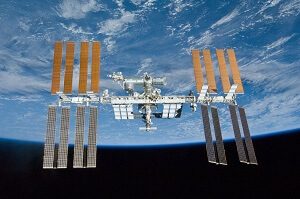
The Hubble Space Telescope cost approximately $1.5 billion adjusted for inflation, while the Extremely Large Telescope was around $1.3 billion .
So, while $100 million-$150 million represents an unfathomable amount for most, it is dwarfed by past government-funded space projects. As technology progresses, economies of scale kick in, and demand rises, prices are likely to continue becoming more attainable.
Major Hurdles to Overcome
Many monumental technical and financial obstacles stand in the way of commercial lunar travel becoming as routine and affordable as jet travel:
Technological Challenges
- Passenger safety – Developing fail-safe systems for launch, spaceflight, and landing
- Life support systems – Creating closed-loop life support that is reliable for durations needed
- Radiation – Mitigating hazardous cosmic radiation exposure during transit
- Lunar environment engineering – Making vehicles and equipment durable for the harsh lunar landscape
- Reusability – Designing for full rocket and spacecraft reusability to reduce costs
Business Challenges
- Capital requirements – Securing the enormous upfront financing required
- Time horizon – Long development timelines before revenue is realized
- Profitability – Dropping prices while still sustaining healthy profit margins
- Liability – Insuring high-risk spaceflight as a commercial endeavor
- Regulations – Navigating legal and government oversight
Demand Risks
- Market size – Having broad enough demand at introductory high price points
- Competitors – Holding market share as more space tourism players emerge
- Reputation – Maintaining excellent safety record to attract customers
More Than a Ticket Price
For wealthy individuals willing and able to pay the steep price, a moon trip offers incredible experiences that are literally out of this world, including:
- Witnessing Earth rise over the lunar horizon
- Seeing distant stars and planets unfiltered by atmosphere
- Experiencing weightlessness and low lunar gravity
- Walking on the moon’s surface (on landed missions)
- Joining an exclusive club of lunar explorers
While the dollar value seems astronomical, the chance to travel to the moon is a once-in-a-lifetime opportunity that cannot be valued. For many, it would be the adventure of a lifetime.
Final Words
The next era of lunar travel is still in its infancy, with a price tag only the ultra-wealthy can afford. But each small step brings us closer to the day when average citizens can make their childhood moon voyage dreams reality just as pioneers like Columbus opened transoceanic travel. For now, we can only imagine the enormous price tag such a trip must command.
Frequently Asked Questions
How long does a moon trip take.
A roundtrip journey to the moon for space tourists is estimated to take roughly one week – 3 days transit to the moon, 1-2 days in lunar orbit and potentially on the surface, and 3 days return to Earth. The exact duration depends on the launch window, flight path, and itinerary.
Would we survive without the moon?
While a moonless Earth would have some effects like impacting tidal patterns, seasons, and nocturnal illumination, humankind would be able to survive without the physical presence of the moon in space. The cultural and inspirational significance of the moon may be harder to replace.
How high can you jump on the moon?
Due to the moon’s lower gravity, approximately one-sixth that of Earth’s, human’s leaping abilities are greatly enhanced. Astronauts have jumped as high as 4 feet vertically on the lunar surface with their EVA suits on. Without a suit, jumps above 10 feet would be possible.
Why did we stop going to the moon?
After achieving the goal of landing astronauts on the moon during the Apollo program, national interest and funding declined, turning attention instead to near-Earth missions like developing space stations. Recent initiatives like NASA’s Artemis program aim to bring humans back to the lunar surface.
What is Google Moon?
Google Moon is a feature in Google Earth that provides detailed lunar maps and imagery from lunar spacecraft used to virtually explore the moon’s surface. It supports tagging and tour creation to annotate areas of interest.
can I go to space so I can die in quite please ? I don’t want to do my GCSEs
Leave a Reply
Leave a reply cancel reply.
Your email address will not be published. Required fields are marked *

The Full Pink Moon Rises Tomorrow: When Is The Best Time To Watch?
This month’s full Pink Moon will dazzle stargazers tomorrow night (April 23).
The Pink Moon will be on full and best display at exactly 7:49 PM ET tomorrow. But from Earth, we likely won’t notice that it’s at its peak. According to NASA, the moon will look full for three days. So from Monday through Thursday, we’ll all notice a shockingly bright and round moon in the sky.
Unfortunately, the full moon will not look pink as the name suggests. Instead, it will be golden or orange as it usually is.
NASA explained that the term “Pink Moon” originated from Native Americans who associated the monthly moon with the spring flowers Phlox subulata, more commonly known as moss phlox or creeping phlox. The flowers can bloom in multiple colors, but they’re most often a bright pink. And they start popping up in April.
The Maine Farmers’ Almanac began referring to full moons by their Indian names in the 1930s. Pink Moon comes from tribes in the eastern United States. Tribes in other parts of the country dubbed the moon Egg Moon, Fish Moon, or Sprouting Grass Moon.
Some believe the springtime pink full moon is a symbol of letting go. And, just as the season brings rebirth and renewal to nature, it should push us into fresh starts of our own.
Those who take a moment to marvel at the moon may also notice another cosmic spectacle, the Lyrid meteor showe r. While Saturday and Sunday were the best nights to watch for shooting starts, the show will continue for another week.
The meteor shower happens when Earth passes through the C/1861 G1 Thatcher debris field. During the peak nights, it was possible to see up to 100 meteors an hour, but on typical nights, people will see around 10 to 20 per hour. However, the light from the full moon will make the shooting stars less visible.
You can find the source of this story’s featured image here .
The post The Full Pink Moon Rises Tomorrow: When Is The Best Time To Watch? appeared first on InspireMore .
Follow us on MSN: Click here

Ep. 771 - Rebel Moon - Part Two: The Scargiver The Filmcast
- TV & Film
David, Devindra, and Jeff take a bite out of Abigail, step through time with The Beast, and take a trip with Conan O’Brien Must Go. Then they return to the stars with their review of Rebel Moon - Part Two: The Scargiver. We're making video versions of our reviews! Be sure to follow us on the following platforms: YouTube Tiktok Instagram Threads Thanks to our SPONSOR: STORYWORTH: Go to StoryWorth.com/filmcast and save $10 on your first purchase. Weekly Plugs David - Decoding Everything: Liveblogging Rebel Moon 2 Devindra - Engadget Podcast: PS5 Pro rumors and the Playdate two years later Jeff - Jeff’s Cameo Page Shownotes (All timestamps are approximate only) What we've been watching (~00:22:20) David - Abigail, The Beast, What Jennifer Did, Ian Abramson’s The Heist, Devindra - The Beast, Conan O’Brien Must Go, Space Ghost Coast to Coast Marathon, 1984 on Audible Jeff - Hundreds of Beavers, The Regime, Conan O’Brien Must Go Featured Review (~01:22:43) Rebel Moon - Part Two: The Scargiver SPOILERS (~01:40:16) Support David's artistic endeavors at his Patreon and subscribe to his free newsletter Decoding Everything. Check out Jeff Cannata’s podcasts DLC and We Have Concerns. Listen to Devindra's podcast with Engadget on all things tech. You can always e-mail us at slashfilmcast(AT)gmail(DOT)com, or call and leave a voicemail at 781-583-1993. Also, follow us on Twitter @thefilmcastpod. Credits: Our theme song is by Varsity Blue, the newest project byTim McEwan from The Midnight. This episode was edited by Noah Ross who also created our weekly plugs and spoiler bumper music. Our Slashfilmcourt music comes from Simon Harris. If you’d like advertise with us or sponsor us, please e-mail [email protected]. You can support the podcast by going to patreon.com/filmpodcast or by leaving a review on Apple Podcasts.
- Episode Website
- More Episodes
Top Podcasts In TV & Film
DOG•GO•TO•THE•MOON price DOG
12.06% ( 1d )
DOG•GO•TO•THE•MOON to USD Chart
Loading Data
Please wait a moment.
DOG•GO•TO•THE•MOON statistics
DOG•GO•TO•THE•MOON community
Dog•go•to•the•moon markets.
Disclaimer: This page may contain affiliate links. CoinMarketCap may be compensated if you visit any affiliate links and you take certain actions such as signing up and transacting with these affiliate platforms. Please refer to Affiliate Disclosure
DOG•GO•TO•THE•MOON news
About dog•go•to•the•moon, most visited cryptocurrencies.

DOG•GO•TO•THE•MOON Price Live Data
The live DOG•GO•TO•THE•MOON price today is $0.004915 USD with a 24-hour trading volume of $41,794,414 USD. We update our DOG to USD price in real-time. DOG•GO•TO•THE•MOON is up 12.06% in the last 24 hours. The current CoinMarketCap ranking is #2466, with a live market cap of not available. The circulating supply is not available and a max. supply of 100,000,000,000 DOG coins.
If you would like to know where to buy DOG•GO•TO•THE•MOON at the current rate, the top cryptocurrency exchanges for trading in DOG•GO•TO•THE•MOON stock are currently BitMart , Gate.io , Hotcoin , and Hibt . You can find others listed on our crypto exchanges page .
- CoinMarketCap
- DOG•GO•TO•THE•MOON
- Car Rentals
- Airport Transfers
- Attractions & Tours
- Bundle & Save
- Destinations
- Trip.com Rewards

Dexter and The Moonrocks 2024 (Cleveland) | House of Blues Cleveland
Get ready to rock out at Dexter and The Moonrocks concert, happening at House of Blues Cleveland on June 16, 2024. The venue address is 308 Euclid Avenue, Cleveland, OH, 44114. This electrifying event will feature a lineup of chart-topping hits that will have the crowd on their feet all night long. The tickets for this highly anticipated concert will be available for purchase starting from April 5, 2024, at 14:00, and will end on June 17, 2024, at 00:00. Dexter and The Moonrocks promise to deliver a show that will leave you wanting more, so mark your calendars and secure your tickets early for a night of unforgettable music and entertainment. Don't miss out on this incredible opportunity to experience the magic of live music with Dexter and The Moonrocks!
Provided by Lylah | Published Apr 26, 2024
Are you interested in Dexter and The Moonrocks 2024 (Cleveland)?
More contents about euclid.
- Customer Support
- Service Guarantee
- More Service Info
- Website Feedback
- About Trip.com
- Terms & Conditions
- Privacy Statement
- About Trip.com Group
Other Services
- Investor Relations
- Affiliate Program
- List My Property
- Become a Supplier

IMAGES
VIDEO
COMMENTS
Evolution of Spaceflight Costs and Technologies. During the space race, the cost of sending something into space averaged between $6,000 to over $25,000 per kg of weight not adjusted for inflation and NASA spent $28 billion to land astronauts on the moon, about $288 billion in today's dollars. In recent decades, it has averaged around $10,000 ...
Right now NASA pays the Russian space agency Roscosmos about $81 million and change for a round-trip ticket in a Soyuz capsule. The latest five seats NASA bought in bulk were a little cheaper ...
During the last 60 years, roughly 600 people have flown into space, and the vast majority of them have been government astronauts. For a suborbital trip on Virgin Galactic's SpaceShipTwo and Blue Origin's New Shepard, seats typically cost $250,000 to $500,000. Flights beyond that to actual orbit—a much higher altitude—are far more ...
In the meantime, they've inked a deal to send a crew of private citizens to the ISS aboard SpaceX's Crew Dragon capsule in October 2021. Axiom's initial crewed mission, dubbed Ax1, should ...
Cost To Go To the Moon. Cost: $140 billion -- for the first 9 trips While a lot of the technology has changed since the 1960s, and costs have almost certainly dropped over the past 60 years ...
SpaceX's Starship spacecraft and Super Heavy rocket - collectively referred to as Starship - represent a fully reusable transportation system designed to carry both crew and cargo to Earth orbit, the Moon, Mars and beyond. Starship is the world's most powerful launch vehicle ever developed, capable of carrying up to 150 metric tonnes ...
Artemis I is an important step in NASA's long-term goals for space exploration, paving the way for us to land the first woman and the first person of color on the Moon, explore more of the lunar surface than ever before — and prepare to travel on to Mars. This handy travel guide is designed to help everyone from space travel rookies to ...
The company has yet to disclose prices. NASA is developing its Space Launch System, which will carry astronauts to the moon and Mars. The rocket's per-launch cost has not been disclosed, but the ...
The initial passenger price estimate stood at approximately $200,000, with potential price reductions of over 90% if demand rises significantly. ... in a low-energy trajectory flyby around the Moon. The trip would last around 6 months. However, their equipment was never launched and is to be converted into an educational exhibit.
Yusaku Maezawa announced he will choose eight members of the public to join him on a trip around the moon, scheduled to fly on SpaceX's Starship in 2023.
But first, it will drop off NASA astronauts at the moon. NASA announced on Friday that it had awarded a contract to SpaceX for $2.9 billion to use Starship to take astronauts from lunar orbit to ...
Pricing is yet to be determined, but SpaceX has dropped hints about the eventual price for a ticket on the rocket. ... host a trip around the moon in 2023, and establish a city on Mars by 2050 ...
SpaceX is sending two private citizens to the moon, and all things considered, it won't cost all that much, if you happen to be a billionaire. ... that is — on a trip around the moon and back ...
Oct. 13, 2021. Blue Origin has declined to publicly state a price for a ticket to fly on New Shepard. The company is nearing $100 million in sales so far, Mr. Bezos has said. But it's unclear ...
Read more: Artemis 2 astronauts meet President Biden to talk America's next trip to the moon. 2023-12-13T14:05:17.570Z Artemis 2 moon mission hardware building up at NASA centers.
Flights of the Space Launch System will be expensive, about $2 billion per launch, although Congress has steadily funded the program. NASA has so far spent $10 billion on the rocket, plus another ...
Tito won't say how much he's paying for his spin around the Moon; his ISS trip cost $20 million (€20.5 million). NASA hails DART mission a success as data confirms asteroid nudged off course ...
NASA announces crew for first trip back to the moon in over 50 years 02:03. A Canadian astronaut and three NASA veterans, including one of the world's most experienced female spacewalkers, will ...
But if $450,000 sounds like a lot of money to you, you'd better sit down before I tell you how much it will cost NASA to send astronauts to the moon again. $4.1 billion per four-person flight ...
NASA. NASA's 2020 budget request, including $1.6 billion in supplemental funding to kick-start the Artemis moon program, comes to $22.6 billion. Of that total, $6.4 billion is directed to ...
The Dear Moon mission crew includes (clockwise from top left): Tim Dodd, Yemi A.D., Choi Seung Hyun, Steve Aoki, Rhiannon Adam, Karim Iliya, Miyu (backup), Dev Joshi, Yusaku Maezawa, Brendan Hall ...
For now, we can only imagine the enormous price tag such a trip must command. Frequently Asked Questions How long does a moon trip take? A roundtrip journey to the moon for space tourists is estimated to take roughly one week - 3 days transit to the moon, 1-2 days in lunar orbit and potentially on the surface, and 3 days return to Earth.
Virgin Galactic is launching a new space age, where all are invited along for the ride.
Here's eight intriguing facts about the Pink Moon that will change the way you view this captivating springtime phenomenon. Image Credit: jakkapan/Shutterstock. 1. The Pink Moon is Named After a ...
The Pink Moon will be on full and best display at exactly 7:49 PM ET tomorrow. But from Earth, we likely won't notice that it's at its peak. According to NASA, the moon will look full for ...
China and the US face a choice between stability and a "downward spiral," Chinese Foreign Minister Wang Yi told counterpart Antony Blinken on Friday in Beijing, as the American diplomat kicked ...
David, Devindra, and Jeff take a bite out of Abigail, step through time with The Beast, and take a trip with Conan O'Brien Must Go. Then they return to the stars with their review of Rebel Moon - Part Two: The Scargiver. We're making video versions of our reviews! Be sure to follow us on the following platforms: YouTube Tiktok Instagram Threads
Elon Musk has postponed his planned trip to India, citing "very heavy" obligations at Tesla.. The Tesla CEO was due to arrive in India next week for a visit that was expected to include a ...
The live DOG•GO•TO•THE•MOON price today is $0.004906 USD with a 24-hour trading volume of $33,804,301 USD. We update our DOG to USD price in real-time. DOG•GO•TO•THE•MOON is up 11.86% in the last 24 hours. The current CoinMarketCap ranking is #2468, with a live market cap of not available.
Searching for information and tickets regarding Dexter and The Moonrocks 2024 (Cleveland) | House of Blues Cleveland taking place in Euclid on Jun 16, 2024 (UTC-5)? Trip.com has you covered. Check the dates, itineraries, and other information about Dexter and The Moonrocks 2024 (Cleveland) | House of Blues Cleveland now! Trip.com has also prepared more similar exciting activities and ...